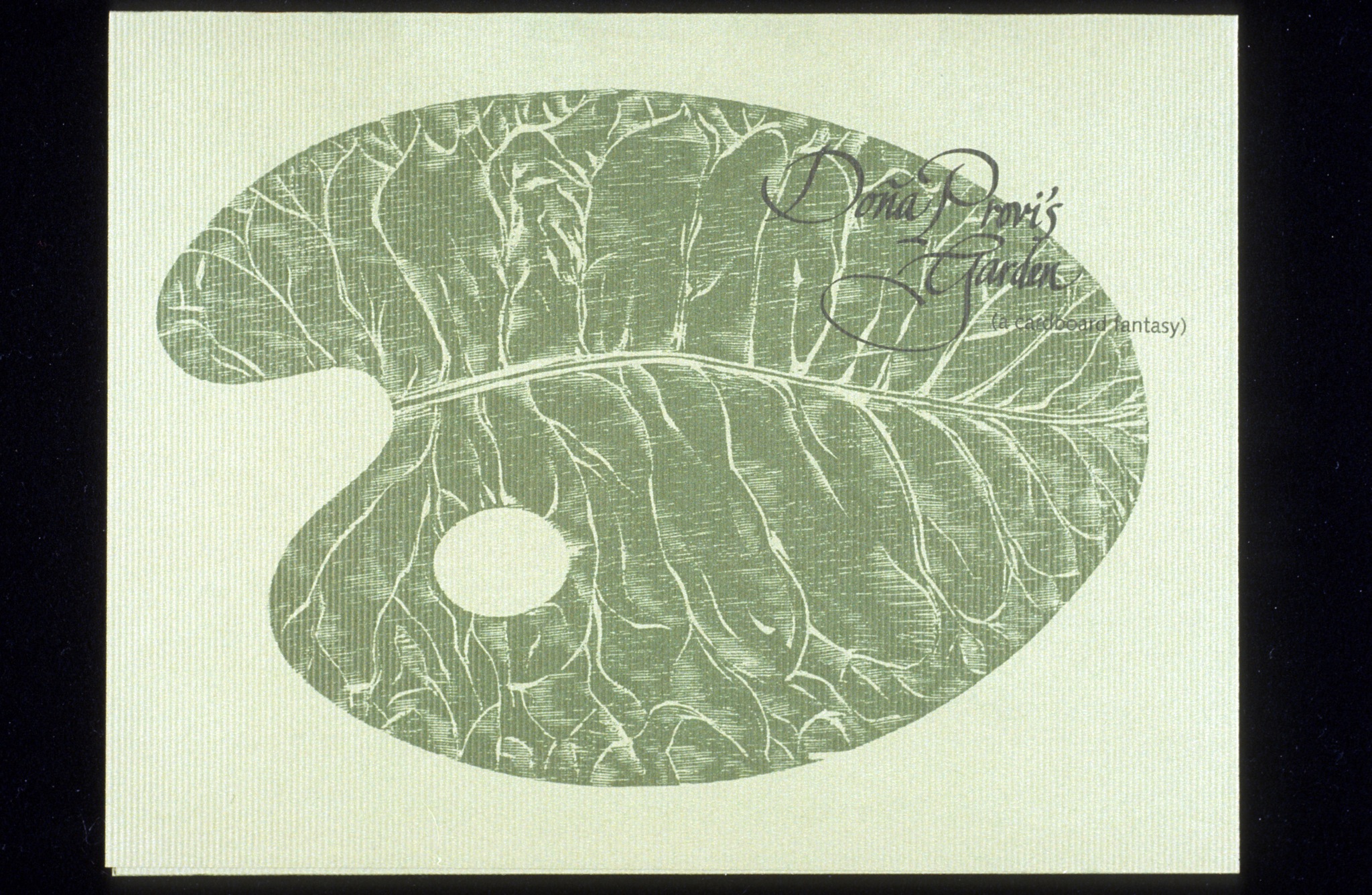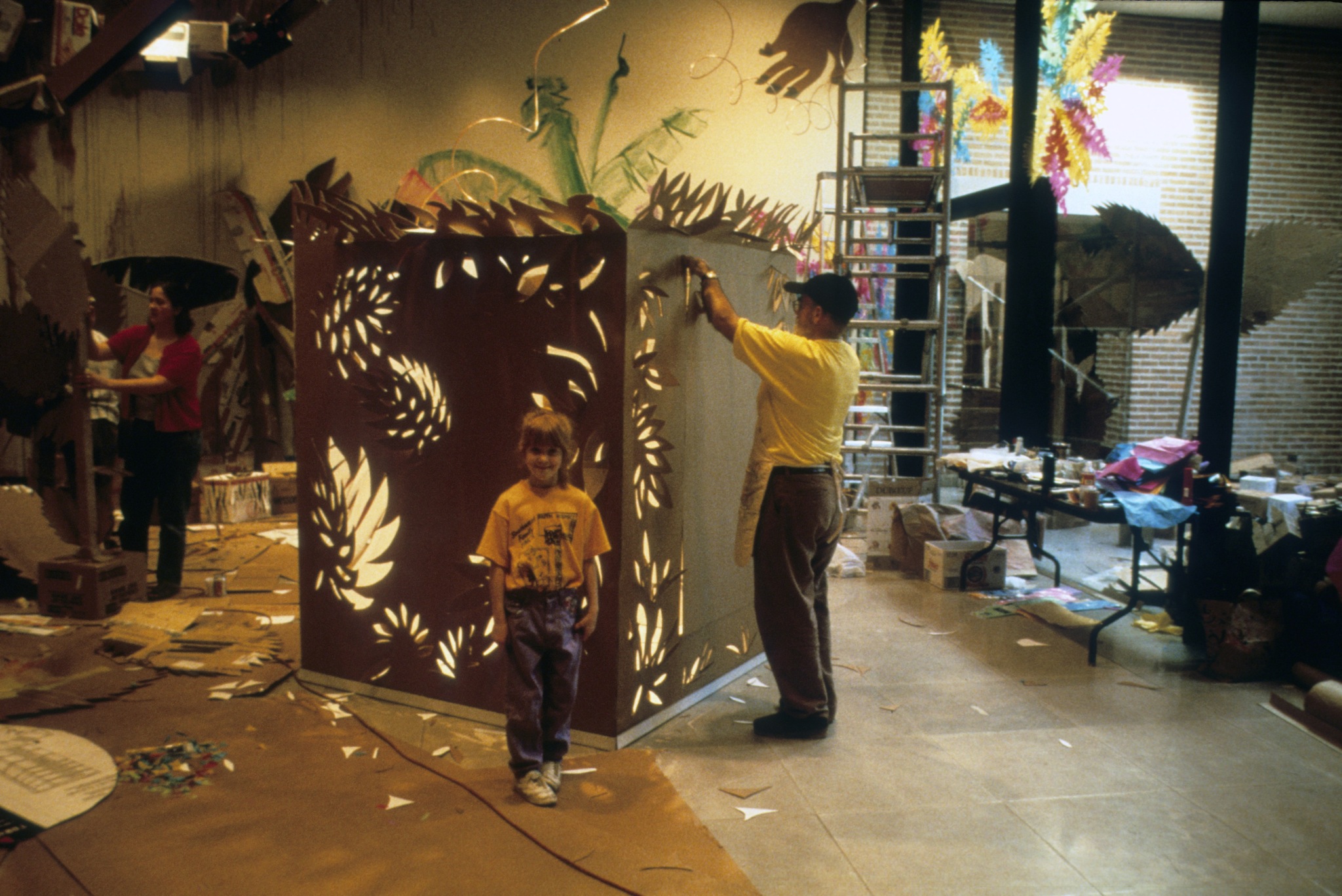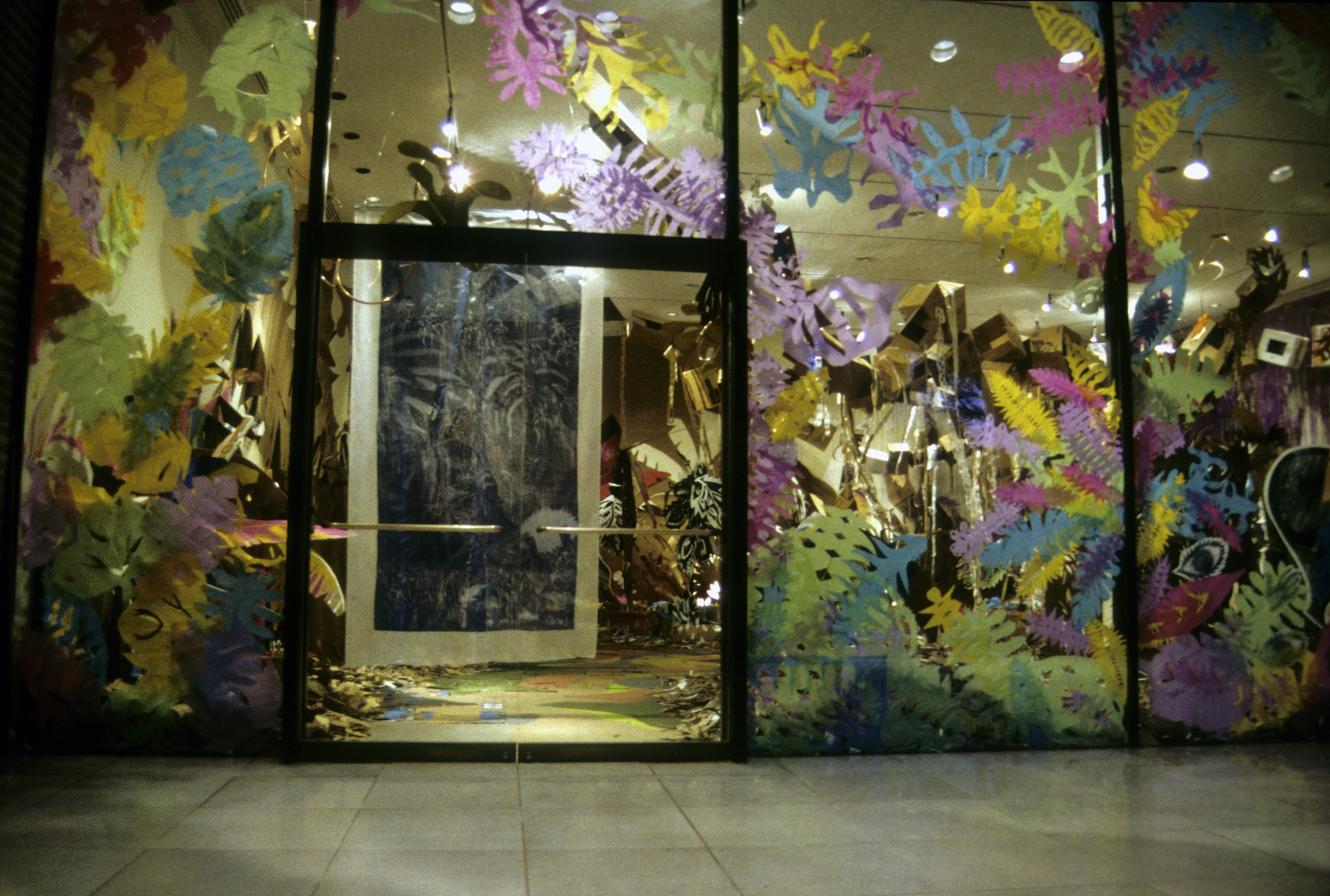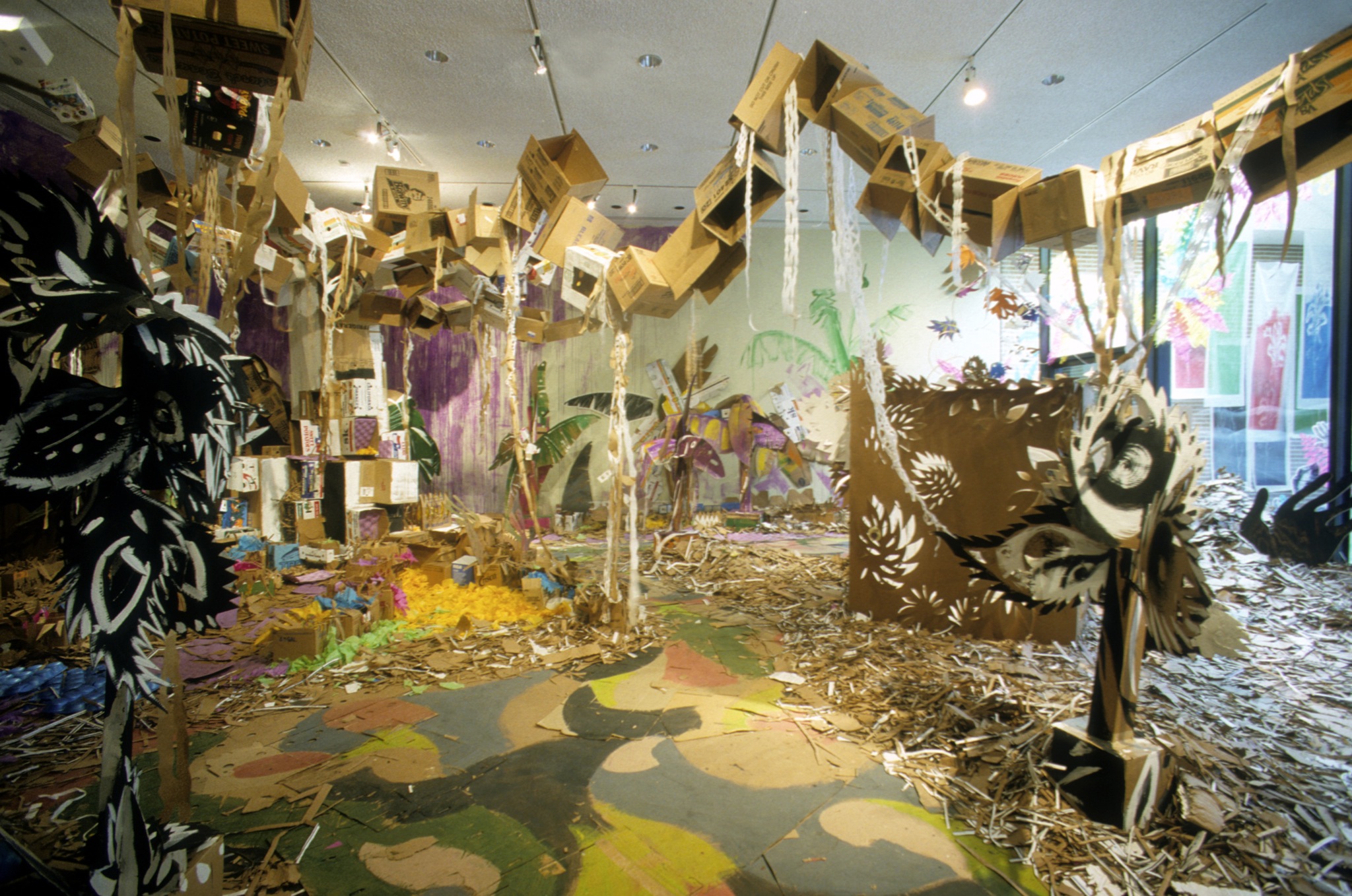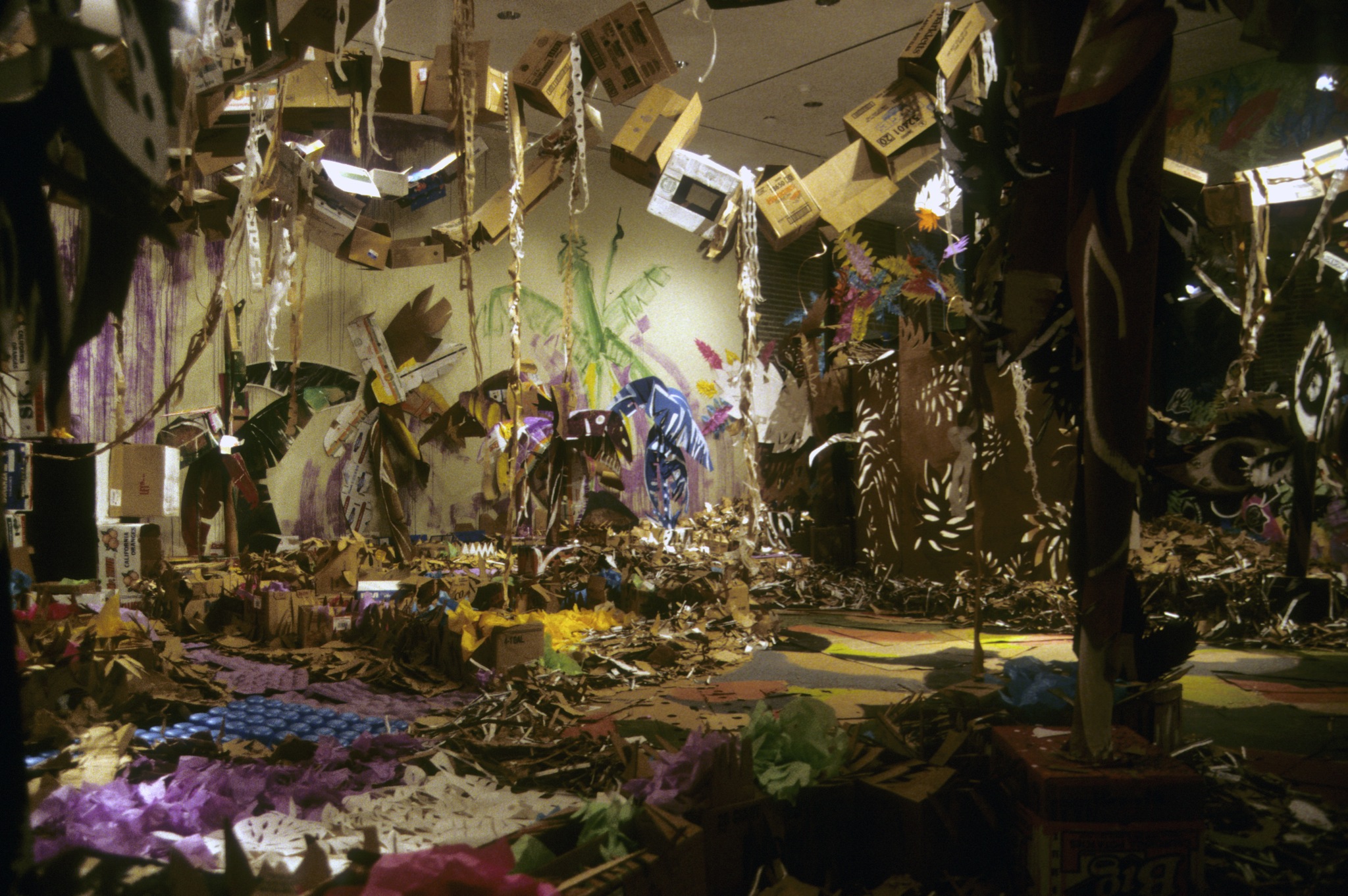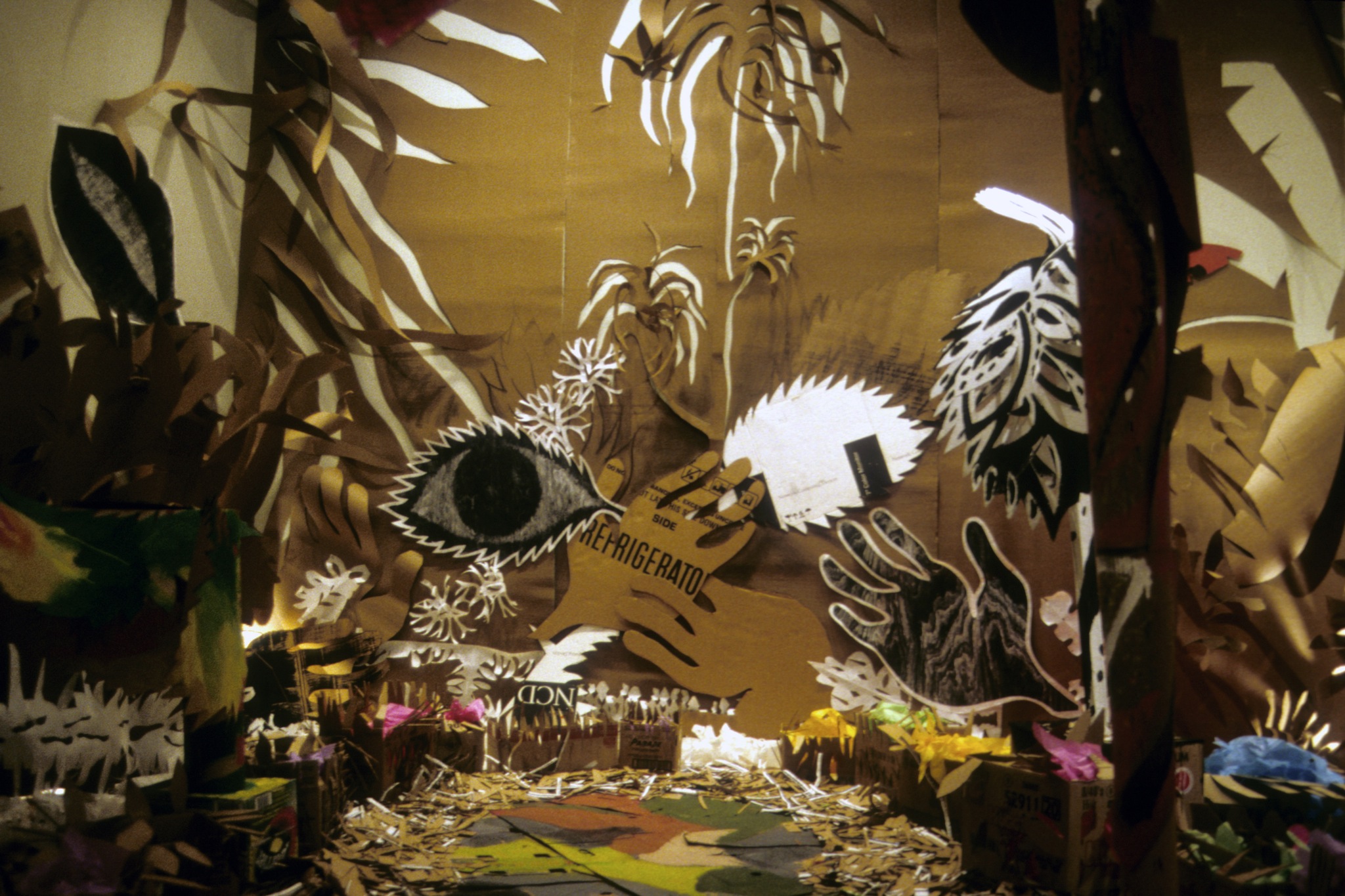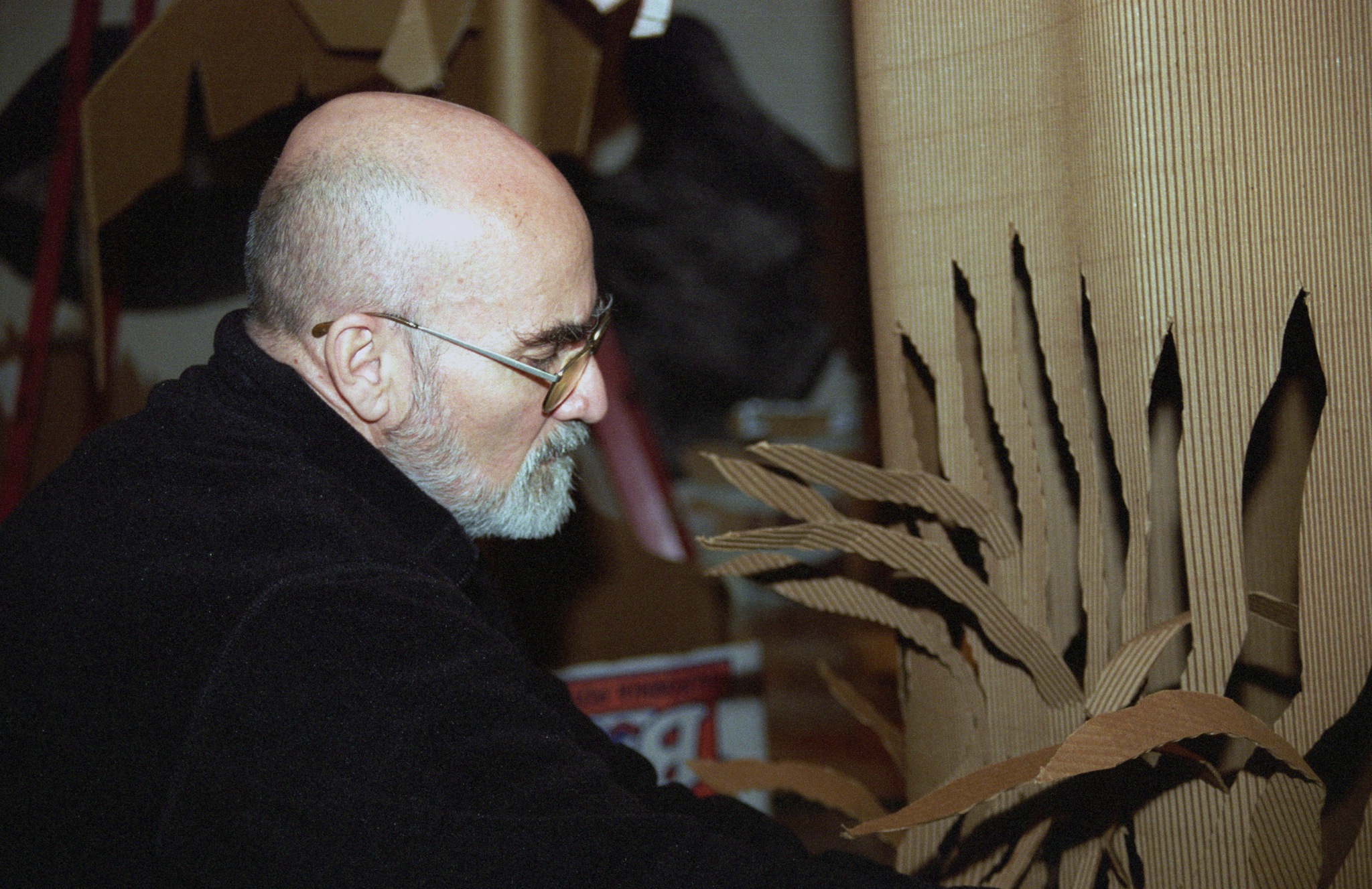Antonio Martorell Doña Provi's Garden (a cardboard fantasy)
8 JANUARY - 15 FEBRUARY 1998
Using discarded boxes, packaging, and paint, Martorell transforms the gallery into what he describes as a “luxuriant, tropical, unpredictable, delightfully disorganized, but gorgeously organic garden.”
To describe his proposed project for the Rice Gallery, Martorell faxed a multi-page description written in calligraphy. He imagines a garden characteristic of his native Puerto Rico, “the kind of garden any Puerto Rican grandmother would grow in the old days governed by whim, taste, need and care, very much like art itself.” Martorell views this garden as a passionate counterpoint to a society inclined to waste. “My proposition is to create greenery out of trash, a cardboard garden made of discarded home appliance boxes, used lettered packaging, the raw or over-cooked stuff from which consumers dreams are made.”
ABOUT THE ARTIST
Antonio Martorell was born on April 18, 1939 in Santurce, Puerto Rico. His father abandoned the family when Martorell was 10 years old; a short time later his family was evicted from their home. Martorell sought escape from these stressful times in adventure and fantasy stories and believes he came to art through the written word. From 1961 - 62 he studied painting and drawing in Madrid under Maestro Julio Martín-Caro and from 1962 - 65 he attended classes at the Taller de Artes Gráficas (Graphic Arts Workshop) at the Institute of Puerto Rican Culture studying graphic design with Puerto Rican master Lorenzo Homar.
Martorell has worked as a set designer, book illustrator and designer, cartoonist and graphics arts teacher. He has exhibited in the United States, Mexico, South America and Europe. Martorell is the winner of numerous awards and in 1986, a 20 - year retrospective of his work filled two museums in San Juan. Included in the retrospective were innovative book designs and illustrations, posters that fused word and image, and portfolios dedicated to much admired writers. Also included were works that revealed the artist could no longer express himself within the traditional, two-dimensional graphics format. Prints burst their bounds to become murals and the viewer was asked to become a participant in Martorell’s creativity as he sought to make art “jump off the wall and become something palpable, inhabitable.”
In 1992 El Museo del Barrio in New York City presented Martorell’s House for Us All. In this installation, the artist offered the viewer a house of childhood visions, a house of boundless possibility, one where walls were built with maps that chart the literary adventures of the writers he admired as a boy - Mark Twain, Robert Louis Stevenson, Alexandre Dumas, Jules Verne, and Victor Hugo. The transformation of the marvelous into the daily, and the daily into the marvelous, is a hallmark of Martorell’s work. He was included in last spring’s Whitney Biennial and currently has exhibitions on view at the State University of New York at Albany and the Hostos Art Gallery, New York City.

